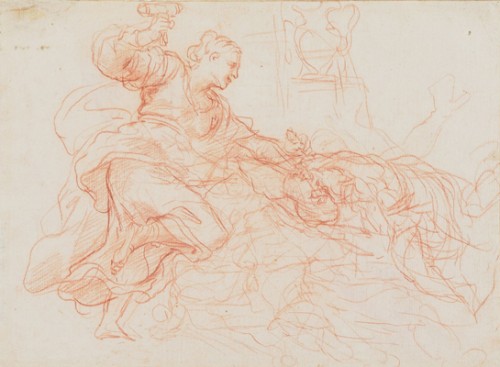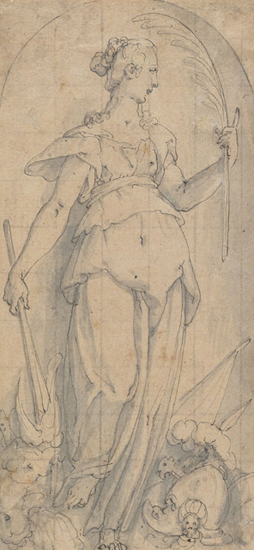New Research on Old Masters
By Bowdoin College Museum of Art
“Jael and Sisera” (recto), 1670-1675, red chalk by Carlo Maratti, Italian, 1625-1713. Bequest of the Honorable James Bowdoin III. Bowdoin College Museum of Art.

“Allegory of Peace,” 1573-1580, pen and black ink, grey wash over black chalk, by Friedrich Sustris, Dutch, ca. 1540-ca. 1599. Bequest of the Honorable James Bowdoin III. Bowdoin College Museum of Art.
She is also working to establish a clearer picture of the early history of the drawings through both archival research and closer examination of the objects themselves. In her first month at Bowdoin, she discovered that a number of the original eighteenth-century mounts for the drawings have been preserved and she is determining whether these drawings were purchased by Bowdoin from an English collection or if he himself had the works mounted. The end result of this research will be an online catalogue that includes an essay on this early history and, working with Bowdoin’s Information Technology department, a presentation of the drawings that is accessible for scholars, students, and the public.



